Editor’s note: This is the final story in a two-part series looking at federal efforts to document the history and toll of Indigenous boarding schools. Read Part one here.
Denise Lajimodiere has studied Native American boarding schools and documented the experiences of Indigenous students for years. Those students have relayed accounts of being forced to leave their homes, learn English and give up tribal languages and cultural practices.
Lajimodiere remembers talking to her own father about his time at Chemawa Indian School in Salem in the 1920s.
“He said kids would just die,” Lajimodiere said. “And I asked him ‘what did they die of?’ … He said they died of being lonesome.”
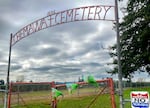
The gate to the Chemawa Cemetery is locked and adorned with flowers on March 22, 2022.
Rob Manning / OPB
Now the federal Interior Department has started to re-examine the long, horrific period from the 1880s through the middle of the 20th century, when the U.S. government routinely forced Native American children to attend far-off boarding schools. Treatment at the schools was often abusive. Conditions could be unhealthy. Students could be punished or beaten for speaking an Indigenous language. Many children died.
Until now, the federal government had done little to confront the traumatic legacy of the “boarding school era” of forced assimilation. Canadian authorities have been examining their boarding school history for a number of years, and discoveries last year of unmarked graves in British Columbia helped prompt action in this country. The Federal Indian Boarding School Initiative has the ambitious goal of finding all the old boarding schools, identifying associated grave sites and determining who is buried in them.
A few federally-run boarding schools remain, including Chemawa Indian School in Salem. While Chemawa has had significant health, academic and budget problems recently, its mission has changed completely toward supporting Indigenous culture and preparing Native American teenagers to attend college or start careers. Chemawa is still around, but many of these schools are long gone, and there’s little documentation left of them. The written record is spotty, and the people who attended or sent children to the campuses are gone or suffer from fading memories.
The most immediate challenge is finding the schools in the first place.
Finding schools, and burial grounds
Figuring out all the places where Indigenous children were brought to attend school has been on Lajimodiere’s mind for years as a member of the Turtle Mountain Ojibwe tribe of North Dakota, a university professor and a co-founder of the National Native American Boarding School Healing Coalition. In her book Stringing Rosaries, Lajimodiere calls her effort to find school locations “tedious” and “frustrating.”
“I would locate a document that would mention other boarding schools in the state or elsewhere,” Lajimodiere wrote. “And I’d be off spending hours, days, months and even years now searching for them.”
Lajimodiere said part of the problem is that the schools wouldn’t always be named as schools. They might be called an “institute,” an “orphanage” or a “seminary.” At times, her research led her to add schools to her list, and then remove them later, after realizing they weren’t schools but some other federal or religious entity.
So far, she’s documented 408 schools that operated at some point dating back to 1879, when the federal government opened the first school, Carlisle Indian Industrial School in Pennsylvania.
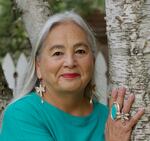
Author Denise Lajimodiere researches Native American boarding schools and the experiences of Indigenous students.
Courtesy of Denise Lajimodiere
“Have I found them all? No,” Lajimodiere said.
The healing coalition’s most recent map of current and former Indian boarding schools is missing some of Lajimodiere’s most recent additions, and shows 367 campuses.
The second step is finding where students were buried. As researchers and tribal elders will point out, when children died at the far-off boarding schools, their remains were seldom sent home.
“All of the schools, all of the old schools, have cemeteries,” said Delores Pigsley.
She’s the council chair of the Confederated Tribes of the Siletz Indians and has deep family ties to Chemawa.
“In those days, kids didn’t get sent home that died unless they lived close,” she said.
But those burial grounds are not necessarily obvious. When investigators told Canadian authorities last year that they’d found unmarked graves, they were identified near known boarding school campuses, in British Columbia and Saskatchewan.
Lajimodiere says there used to be two boarding schools near Fort Totten in her home state of North Dakota: one federal and another run by the Catholic Church.
She’s been searching for graves of children who died at those schools. Lajimodiere says looking through old photographs and recent conversations with tribal elders led her to a possible burial site, and suspects she may have found one amid a grove of trees.
“So about 20 years ago there was a burn and they could see the rocks that might have marked graves,” Lajimodiere said, so she went to check it out recently. “We found the rocks and so some of the people that work at Fort Totten Historical Society are going to put stakes in there to mark the graves.”
Lajimodiere hopes to look more closely as soon as she can, but as recently as last month the site was covered by six feet of snow. She says for investigators to do their work, they may need to do a controlled burn to clear the brush and trees that have grown there over the last 20 years.
Graves, remains and painful dilemmas
Locating the schools and the cemeteries are key steps. But that’s still not the end — even at a school, like Chemawa, where the graveyard is clearly marked with a fence and gate.
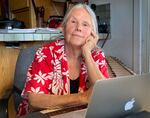
SuAnn Reddick, former volunteer historian at Chemawa Indian School, works at her laptop at her home in McMinnville, Ore., in July 2021. With the help of other researchers, Reddick published a database documenting hundreds of student deaths at Chemawa, and its predecessor, the Forest Grove Indian Training School.
Rob Manning / OPB
SuAnn Reddick volunteered for years as an archivist and historian at the Salem campus, with a special focus on how the property was used over the years. With the assistance of other researchers as well as Chemawa staff, Reddick and Pacific University archivist Eva Guggemos have compiled an extensive database of students who died at Chemawa and its predecessor 45 miles to the north, the Forest Grove Indian Training School.
Reddick has a corresponding map of the Chemawa campus cemetery, which includes 200 names of students buried there. But connecting the map to the actual areas in the ground where remains rest is not easy.
Reddick said there are a few names that appear to be duplicated on the map, and there are several unmarked plots. And looking at the cemetery itself doesn’t provide much clarity because of the work groundskeepers did years ago in an attempt to clear out blackberry bushes and underbrush.
“Someone decided to take a bulldozer and go in and bulldoze as much as possible to clean it up,” Reddick said. “Unfortunately most of the grave markers were wood and they were destroyed. Some of them were marble, but even those, many of them were pushed off and have disappeared.”
But Reddick said none of the graves themselves are believed to have been disturbed.
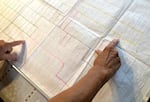
Longtime volunteer historian at Chemawa Indian School, SuAnn Reddick, points out burial sites on a grid, which maps out what's known about unmarked graves at the Chemawa cemetery, in July 2021.
Rob Manning / OPB
When unmarked graves were first detected in Canada last year, the use of ground-penetrating radar, or GPR, was critical. That technology is already in use at known or suspected Indigenous grave sites in the U.S., including at Chemawa in Oregon.
Northern Cheyenne tribal member and Montana State doctoral student Marsha Small is one of the few people who’s familiar with the sensitive GPR equipment and has the cultural awareness and lived experience of someone who’s Indigenous.
She’s scanned the cemetery at Chemawa multiple times and has worked with tribes at other sites in the Northwest. Due to the sensitive nature of the work, she’s not naming where else she’s working, or with whom.
Small says using GPR is highly technical and can produce images that require significant analysis to properly differentiate human remains from other underground material. It’s also a deeply emotional experience to walk the ground, seeking the remains of Indigenous children.
“It’s very heavy work,” Small said. “It’s empowering, too. But it’s still draining as a Native because I’m helping to reclaim children who were taken with hostility, with hostile intention, with genocidal intention.”
Although there are potentially hundreds of burial sites and few people trained to analyze them, Small says the surveys can’t be rushed. She emphasizes that it needs to be done “at a rate of community involvement that people understand that it’s an area of healing.”
What happens after remains are found will also prove challenging, Small points out.
“Every tribe has a child and has a right to do analysis to see if that kid is theirs to take home,” she said.
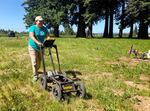
Researcher and Northern Cheyenne tribal member Marsha Small uses ground-penetrating radar in the cemetery at Chemawa Indian School in summer 2021.
Rob Manning / OPB
The expectation is that as burial sites are found and investigated, they’ll likely include the remains of children from multiple tribes, since children from many different tribes were sent to federally-run boarding schools. And not all tribes feel the same way about using radar to scan for remains.
Small said members of some tribes have told her, “’We believe that everything still has an energy, and we don’t want nobody touching our kid.’”
“And you have another tribe next to it, that says ‘but we really want to take our kid home.’ That’s really going to be intricate work.”
Small has been in communication with the Interior Department since administrators announced their effort last June to find school sites, burial grounds and remains. She said agency officials want her to coordinate with them as she visits federal sites, like Chemawa.
She has two priorities she wants the federal government to bear in mind as they embark on this ambitious and potentially contentious work: that Indigenous people lead it; and that the government provide funding for tools and training, as well as to help people process and heal, as they learn of lost relatives.
A new leader, a new approach
The Federal Indian Boarding School Initiative is being led by Interior Secretary Deb Haaland, the first Indigenous person to hold that job. As Haaland emphasized when she announced the initiative last June, it’s an agency responsible for creating the boarding schools and their pattern of forcing Indigenous children away from their homes and families.
“I come from ancestors who endured the horrors of Indian boarding school assimilation policies, carried about by the same department that I now lead — the same agency that tried to eradicate our culture, our language, our spiritual practices and our people,” Haaland said.
At the same time, Haaland also acknowledged the challenges of the work ahead.
“I know that this process will be long and difficult,” Haaland said last June, in announcing the initiative. “I know this process will be painful.”
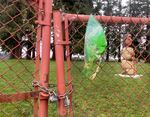
The gate to the Chemawa Cemetery is locked and adorned with flowers on March 22, 2022.
Rob Manning / OPB
The Interior Department announced a partnership at the end of last year with the National Native American Boarding School Healing Coalition, the group that Lajimodiere helped create a decade ago. They’re focused on producing an initial summary of known research expected early this month, into boarding school sites, burial grounds and the extent and identities of remains.
The federal initiative is promising some long-awaited answers. But for individual relatives and family members, like Lajimodiere, the answers from research into Chemawa, where her father attended in the 1920s, led to more questions.
“Twenty-three students died while my father was there — the four years that my father was there,” Lajimodiere said. “... That’s horrifying. I wondered, ‘Did he know them?’”
Federal officials say all of this work — researching schools, investigating burial sites and identifying children — as complicated and difficult as it will be, is still just a foundation. Longer term, the focus is on honoring tribal communities and confronting the impact of these assimilationist policies, the intergenerational trauma, on generations of Native American people.
